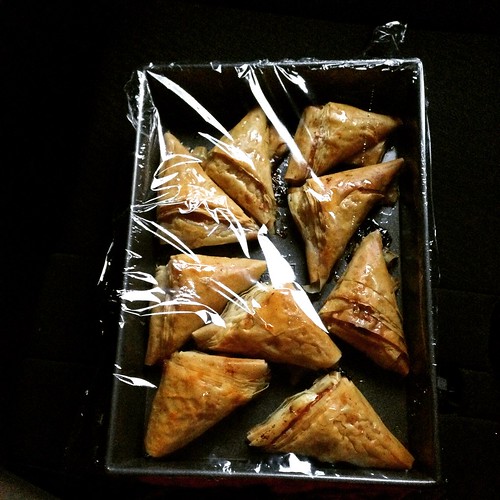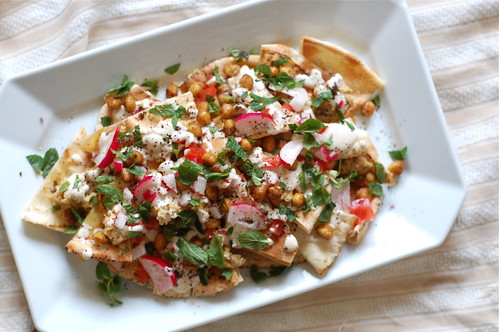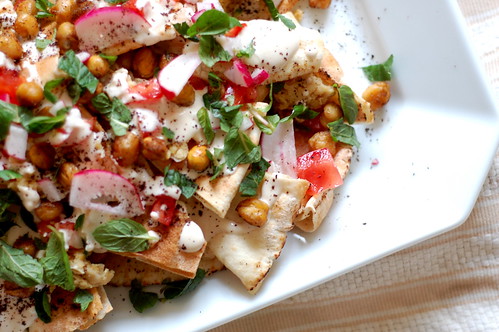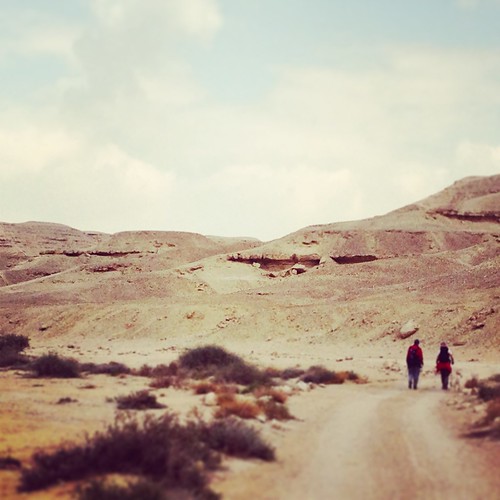
One of the "problems" of living with someone who conducts food research as a serious hobby is that we almost never make anything more than twice. Oh that chickpea curry thing you really liked? Don't worry, I might make it again in about five years. Oh you wanted pizza for dinner? But I've been experimenting with curing my own basterma and I thought I'd try this new vegetable I've never heard of that I found at the market. Oh you didn't want carrot soup for the third time this week? But I'm perfecting the recipe! Welcome to life with yours truly.
Which means that poor Paul has been asking me to make cream-filled baklava (baklava muhallabiya) again for about the last 4 years. Searching for something to bring to my office one day, I finally caved and picked up the ingredients at the market. But of course my mind, which seems to never stop churning over different permutations of what I can make with things in the refrigerator, remembered that another type of cream-filled baklava, called sha'abiyat (شعبيات), is made with the same ingredients as baklava muhallabiya. Like the baklava, sha'abiyat are a specialty of Syria, in particular popular in Aleppo, and are often found at Ramadan. Sha'abiyat are triangles of baklava filled with a simple cream filling and baked and then covered in syrup.
In somewhat of a comedy of errors (although sometimes I think living in Egypt in general is a comedy of errors) I went to three different grocery stores to try and find orange blossom water, which was sold out or absent at all three. I ended up making the baklava syrup with fresh orange zest, and everyone loved it, so much so that when I made the same recipe the following week to re-test it, I stuck with the orange water. It adds a brightness and clean taste that I find is so often missing from baklava.
Before I let you go, let's have a quick review of baklava technique. (1) Baklava is not that hard to make. (2) Use some form of clarified butter, the water in un-clarified butter makes the baklava have burnt spots. (3) Cold syrup + hot baklava from the oven = crispy baklava. (4) Fresh baklava is infinitely better than pre-packed baklava.
Final food-nerd notes:
- Lonely photo of sha'abiyat taken on the car seat next to me on the commute to work, because living in Egypt means endless time commuting and not enough time for photos.
- Sha'abiyat are also sometimes made with a softer homemade dough instead of fillo dough, and are sometimes made with a semolina custard instead of clotted cream. (See picture here.)
- Like the idea of having more routine in your dinner life? I loved Shauna's post about that here.
- A rare piece of good news from Syria: the Icarda genebank is preserving seeds for traditional food stuffs and plants.
- Poor Paul is still waiting for his baklava muhallabiya.
Orange-Scented Cream Triangles (Sha'abiyat bil Portuqal)
Using only two fillo sheets will initially seem like a thin dough, but trust me, once you've done the folding of the triangles it's just the right amount. Ghee can be purchased at most grocery stores these days, samneh is the Middle Eastern equivalent, and can be found at Middle Eastern shops. If you can get your hands on clotted cream it is worth it, as it makes this recipe both faster and tastier.
1 box fillo dough, fully defrosted
1 1/2 cups samneh, ghee, or clarified butter
filling:
1 pint clotted cream or 'ashta, if you can get it, or heavy cream
1 tablespoon cornstarch, if using heavy cream
4 tablespoons (1/4 cup) honey
zest of half an orange, or 1 mandarin
1/4 teaspoon salt
syrup:
2 cups sugar
1 cup water
zest of half an orange, or 1 mandarin, plus 1 tablespoon of juice
1. Make the syrup: Place the sugar and water together in the saucepan and place over medium heat. Heat the mixture, stirring occasionally, until the mixture starts to bubble and the sugar is dissolved. Remove the pan from the heat, then grate the orange zest directly into the syrup and add the tablespoon of juice. Set aside and let syrup cool completely. (This can be done several days ahead and kept in a sealed jar in the fridge.)
2. Make the filling: If using clotted cream simply stir together the cream, honey, zest and salt. If using heavy cream, place the cream and flour in a saucepan and heat over medium-low heat, stirring constantly, until the mixture is thick and bubbly slightly. Remove the pan from the heat and add the zest, honey, and salt. Taste for sweetness, it may need a touch more honey. Set aside to cool. (This can be done one day ahead and stored in the fridge.)
3. Make the baklava: Preheat the oven to 350F. Get out a large rectangular rimmed baking tray. Melt your samneh or butter in a bowl and have a pastry brush ready.
4. Remove the fillo dough from the box, place it on the counter with plastic sheets both underneath and on top of the dough. Place a damp kitchen towel on top of the top plastic sheet over the fillo dough. Working either directly on your counter, or on a large marble board, lightly butter your counter or board. Place one sheet of fillo dough down, lightly butter it with you pastry brush, then place another sheet of fillo on top and lightly butter that sheet. Slice the fillo dough into four strips lengthwise (so you''ll make 3 cuts to create 4 strips). Place a spoonful of the cream filling at the top corner of one strip of fillo, then fold the fillo over on itself in a triangle, and keep folding up, as if you were folding a flag, until the whole fillo strip is used up. Use a bit of butter the secure the ends of the fillo strip to the triangle. Place on the baking sheet seam-side down. Continue with the remaining strips, then continue making triangles until you've used up all your fillo dough. Crowd the triangles into the pan as close together as necessary.
5. Brush the tops of the triangles with a bit more butter. Bake the triangles until a medium brown (not too dark, not too light), about 30-35 minutes.
6. Remove from the oven and immediately pour 1 cup of cold syrup over the hot triangles. Let absorb for 10 minutes. Then drizzle another 1/2 cup of syrup over the triangles. Let the triangles cool completely. Serve with additional syrup on the side, for people to add as they like.
Want more like this? Try the (easy!) regular baklava recipe.










